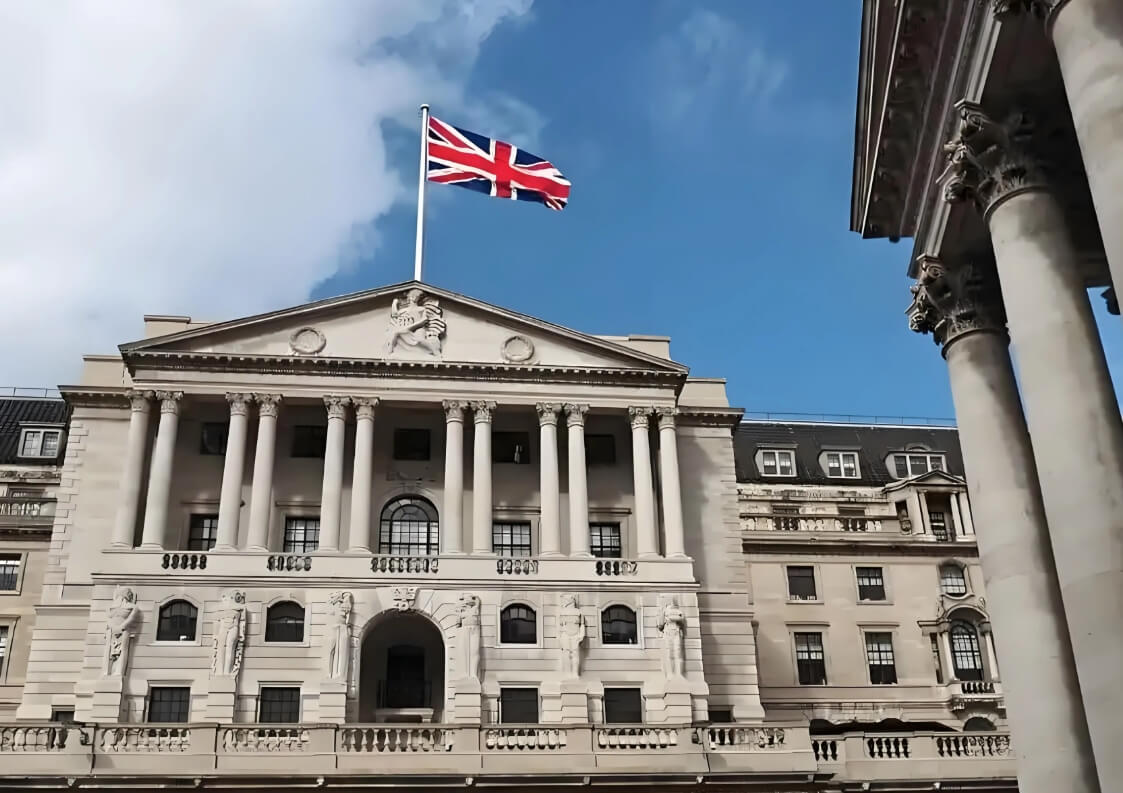Bank of England Governor Bailey releases more aggressive monetary policy,Will the British pound continue to rise or turn around and fall?

TradingKey - The latest International Monetary Fund (IMF) report, "World Economic Outlook," shows that the UK economy has demonstrated unexpected resilience, leading to an upward revision of the GDP growth forecast for 2025 from 1.1% to 1.2%. Since mid-January this year, the British pound has shown a fluctuating upward trend, rising from a low of 1.21 to 1.35, an increase of over 1,400 basis points. However, to counter the impacts of U.S. tariffs, the Bank of England may continue to lower interest rates, which could suppress the strengthening of the pound.
Data from the UK Office for National Statistics indicates that the actual GDP grew by 0.7% quarter-on-quarter in the first quarter of 2024, significantly accelerating from the previous quarter's growth of 0.1% and exceeding market expectations of 0.6%. At the same time, inflation pressures remain high in the UK, with the core Consumer Price Index (CPI) rising by 3.9% year-on-year in April, and retail sales data also outperforming expectations.
Bank of England Governor Andrew Bailey has stated that the volatility of President Trump's trade tariff policies has caused global economic turbulence and remains a major source of uncertainty affecting the direction of bank policy. Bailey pointed out that the interest rate trajectory is still downward but the pace and extent of reduction remain shrouded in uncertainty. Last month, the Bank of England lowered the benchmark interest rate to 4.25%, but due to rising inflation, its attitude towards continued rate cuts remains cautious.
Due to the impact of tariffs, the U.S. manufacturing sector is also facing significant challenges. The U.S. ISM Manufacturing PMI slightly decreased to 48.5 in May 2025 (from 48.7 in April 2025), falling below market expectations of 49.5, marking the third consecutive month of contraction in manufacturing and the largest decline since November 2024. The U.S. manufacturing sector has contracted for the third consecutive month in May, with suppliers facing longer delivery times due to tariffs, which may signal impending shortages of certain goods.
Concerns about inflation rising again have prompted Federal Reserve officials to adopt a tough stance on monetary policy. Atlanta Federal Reserve President Raphael Bostic stated on Tuesday that he expects only one rate cut this year because "most inflation indicators are still flashing red." Federal Reserve Governor Lisa Cook expressed worries about inflation progress, saying that recent low inflation data may reverse after the tariffs impact the economy. Chicago Federal Reserve President Austan Goolsbee noted that inflation rising from U.S. import tariffs may soon become apparent, but he indicated that it will take more time to see the economic slowdown triggered by tariffs.
Morgan Stanley stated that the interest rate and currency markets have entered a sustainable significant trend, predicting a substantial decline in the dollar and a steepening yield curve. Major driving factors include expectations that the Federal Reserve will cut rates by 175 basis points and slowing U.S. economic growth. It is anticipated that the dollar will drop to levels not seen since the COVID-19 pandemic by mid-next year.
Technical Analysis of GBP/USD

Source: Mitrade GBP/USD Trends
From a technical perspective, the GBP/USD has recently shown a fluctuating upward trend, with bullish forces dominating the market. The daily candlestick chart maintains a channel of fluctuating upward movement. All moving averages are in a bullish alignment, and the KD indicator remains above the 50 level, with both lines turning upward. This suggests that the GBP/USD may continue its fluctuating upward trend, with the initial resistance level at around 1.3800.
The initial resistance level for GBP/USD on the upside is at 1.3700, followed by further resistance at 1.3800, with a key resistance level at 1.3900. On the downside, the initial support level is at 1.3350, further support at 1.3300, and a crucial support level at 1.3150.
* The content presented above, whether from a third party or not, is considered as general advice only. This article should not be construed as containing investment advice, investment recommendations, an offer of or solicitation for any transactions in financial instruments.


